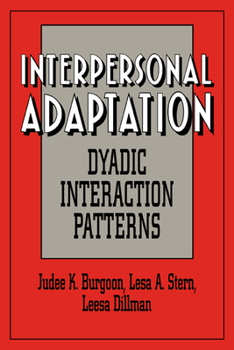Interpersonal Adaptation: Dyadic Interaction Patterns
Select Format
Select Condition 
Book Overview
When people communicate, they often adapt their interaction styles to one another. For example, they may match each other's behavior, synchronize the timing of behavior, or behave in dissimilar ways. This volume analyzes these dyadic interaction patterns and builds a case for a new theory of adaptation: Interaction Adaptation Theory (IAT), which draws the soundest principles from previous theories while being responsive to current empirical evidence. The book concludes with the offer of new research directions that would test the theory in order to bring the research full circle and connect interaction patterns with outcomes. This volume will serve as both a reference guide for researchers and a text for students and faculty in communication, psychology, family studies, counseling, and sociolinguistics.
Format:Paperback
Language:English
ISBN:0521033144
ISBN13:9780521033145
Release Date:February 2007
Publisher:Cambridge University Press
Length:356 Pages
Weight:1.15 lbs.
Dimensions:0.8" x 6.0" x 9.0"
Customer Reviews
0 rating





